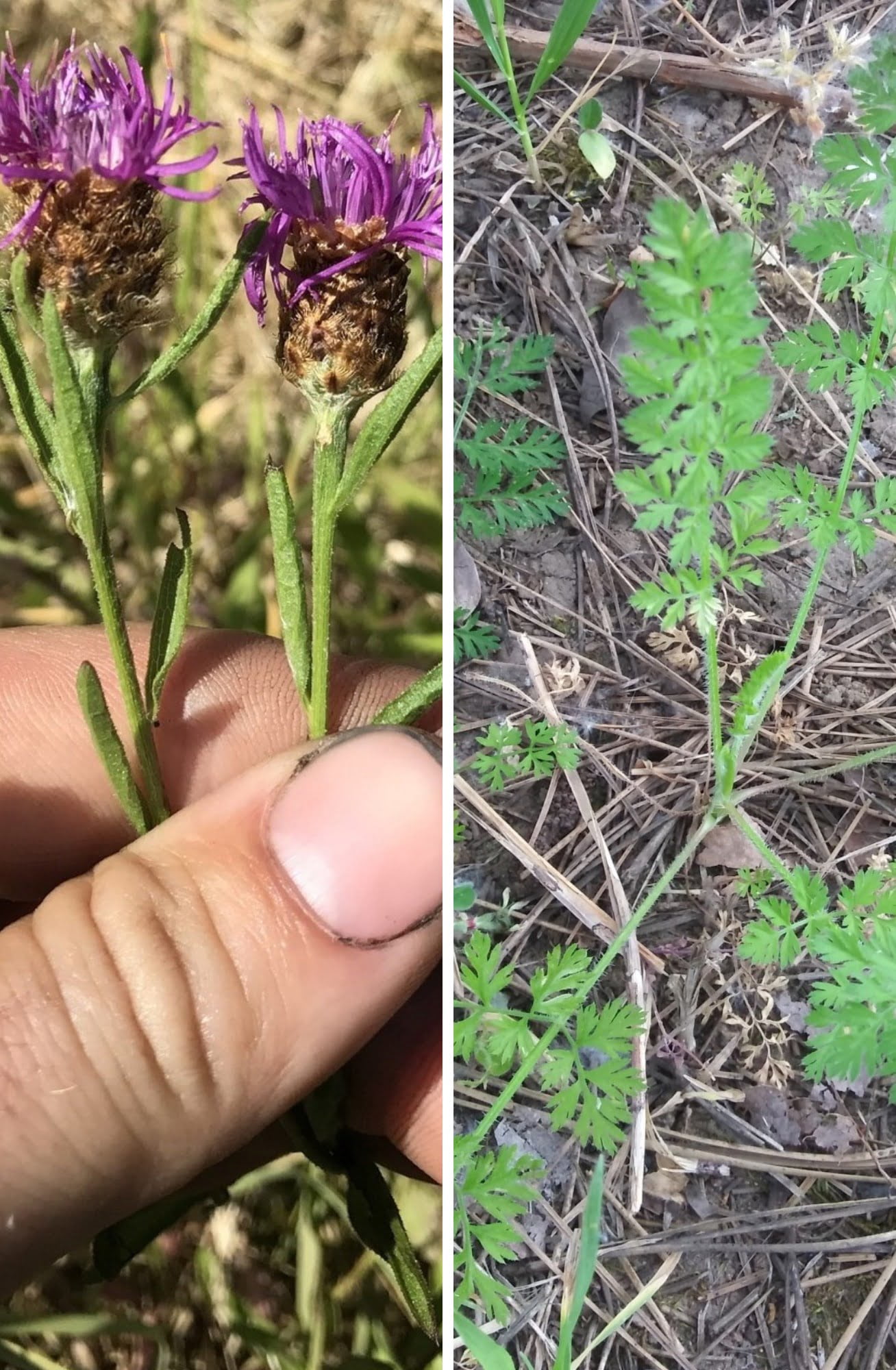
Beautiful Blooms and Bothersome Blossoms: The Dichotomy of Seeing Spring Growth
March 2021
Spring plants are starting to grow, which usually prompts me to message photos to my mom bragging about being able to see daffodils (Narcissus sp.) in bloom before hers have even emerged from the cold soil. In recent years, however, the spring growth has created feelings of a dichotomous nature – spring brings growth of the plants we want…and those we don’t. Small seedlings pop up starting their months-long goal of eventual creation of the next generation of seeds while I start my 8-month botany exploration game of "Who am I looking at?" - an activity to which I am sure many of you readers can relate. On the other hand, working to restore native grassland habitats for rare and endangered plants and butterflies requires a strong connection with the weedy species and an understanding of their seasonal timing and phenology. This dichotomous nature of looking excitedly for the magic of the landscape flourishing with things we planted last fall is mixed with the dread of seeing how many plants are on the list to be killed.
A walk through one of our restoration sites this time of year is filled with many sights. I look to the left and note something uplifting and exciting, like a large patch of streambank lupine (Lupinus rivularis). But then I look right and note the need for a return trip with a shovel or herbicide backpack, "darn you Canada thistle!" Seeing the blooms of all of the plants that are desired elicits excitement, while the blossoms of undesired weeds elicit a dread of the future weed seedlings they will bring.
While young tansy ragwort (Jacobaea vulgaris) is fairly conspicuous with the ruffled, leafy, basal rosettes and the wonderful dark purple stems do add a little unique color to the landscape, the hazard it presents is surprising. One tansy ragwort plant can produce 100,000 to 250,000 seeds which are quite long lasting, sometimes remaining in the soil for over a decade. Wow! That little bit of color sure isn’t worth the impact to our restoration plans; those have to go!
Later in the spring, I patiently await seeing a field of tall-stalked, deep blue-flowered camas (Camassia sp.) towering above its cohabitants, gracing the landscape with its short-lived flowers that eventually wither and remain on the stalk. The labor-intensive planting of these bulbs, which use yearly spring root growth and autumn contraction to spiral their way deeper into the soil, is always worth the effort once the field erupts with their magnificent large flowers.
Another favorite native plant is American wild carrot (Daucus pusillus). This short-statured cutie with its bracts below the inflorescence lobed to take on a lace-like appearance can easily be overlooked in meadow habitats, but its hidden charm is well worth the searching.
I dread the day I see a restoration site filled with lovely flowering knapweeds (Centaurea sp.), knowing full well the dangers these plants hold in store for the native plants in the grasslands – the resources of light, space and nutrients are limited, and knapweeds are excellent competitors. Or even worse (yes, there is something even worse than knapweeds!), the wonderfully lace-leaved Queen Anne’s lace (Daucus carota), pompously waving conspicuous white umbels, each one containing a single central red flower, high in the air for all to anticipate the estimated 1,000 to 40,000 fruits (and seeds) per plant with hooked spines that are easily transported by people and animals. This species has a deep taproot and mature foliage that is resistant to herbicides – once established it is one of the hardest weeds to eradicate. And finally, one can’t deny the beauty of a new false brome (Brachypodium sylvaticum) clump with its quite attractive lime-green bunches and hairy leaf margins. The mere sight of one of these plants makes me shudder, and I must stop everything and scour the area for more, hunting like I dropped my keys in the woods so I don’t miss even a single individual.
Daily observations are always a tug of war of feelings for habitat restoration staff, but you can’t have the native blooms without the weeds in this line of work. The really awesome plants wouldn’t have the space they need if the faster growing, higher seed setting invasive plants were not kept at bay. So as y’all are out at your favorite trails and wild areas observing the wonders spring has to offer, remember to pull some weeds too. IAE publishes a helpful pocket book titled Field Guide to Weeds of the Willamette Valley that can be purchased or downloaded free from our website. Every weed you pull today, keeping it from becoming a bothersome blossom, makes room for more native beautiful blooms you’ll love to see next year.
Restoration
Research
Education
Contact
Main Office:
4950 SW Hout Street
Corvallis, OR 97333-9598
541-753-3099
info@appliedeco.org
Southwest Office:
1202 Parkway Dr. Suite B
Santa Fe, NM 87507
(505) 490-4910
swprogram@appliedeco.org
© 2025 Institute for Applied Ecology | Privacy Policy



